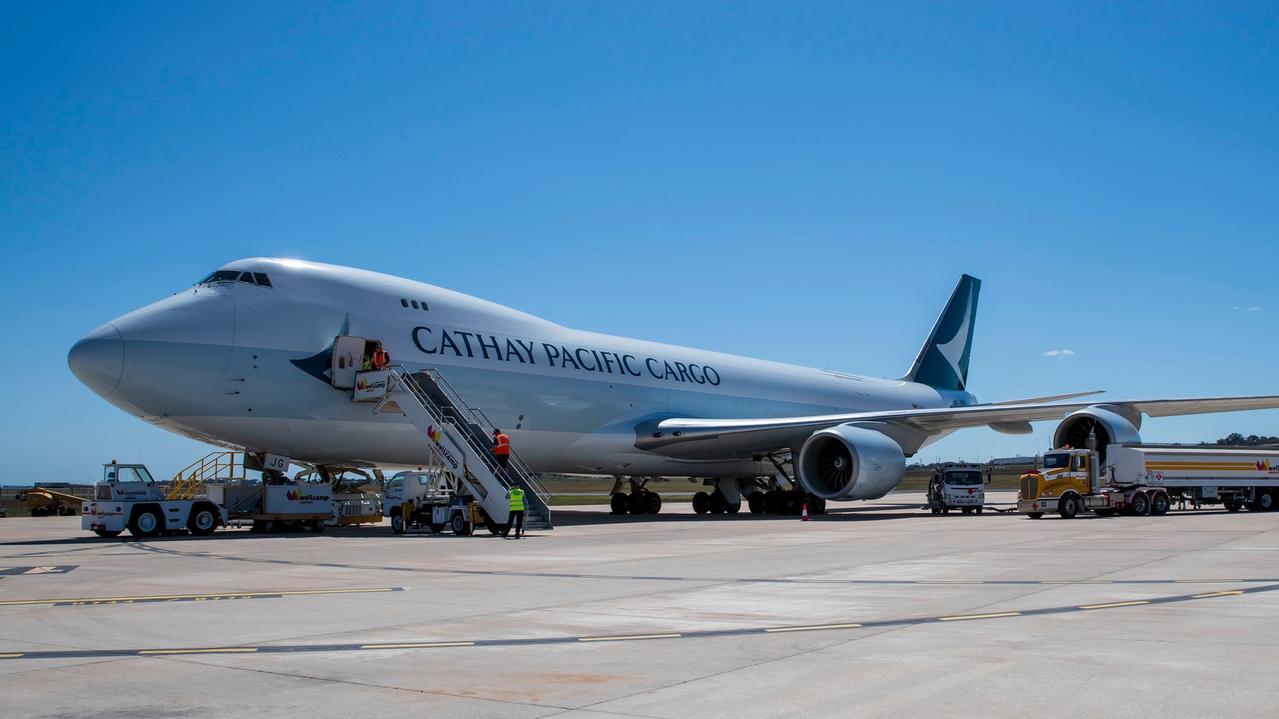Economic cost of fire ants to Darling Downs and Queensland
They’re the invading insects with a mean sting that can destroy crops, electronics and could cost the Darling Downs billions. Here’s how experts are working to stop their spread before it’s too late, and why governments are currently falling short.

Business
Don't miss out on the headlines from Business. Followed categories will be added to My News.
Since they were first detected in Queensland more than 20 years ago, red imported fire ants have mostly stayed within well-established containment lines in the state’s southeast.
But within the past 12 months, these invasive and potentially devastating insects have breached these biosecurity zones into the Darling Downs.
Eighty nests, believed to have come from a turf farm in the southeast biosecurity zone, were found at the Army Aviation Centre in Oakey.
It is believed they may have been there for up to two years.
Experts are now urging all levels of government to move quickly, and to fund their eradication before the spread continues.
1. Economic cost

The primary concern from politicians and environmental groups is the potential economic cost, which could reach more than $2 billion.
One report from the Australian Institute estimates fire ants will cost $2.5 billion in damages by 2035.
“For every dollar spent eradicating the ants, the public benefit is between $3 and $9,” the report said.
The Darling Downs could wear a significant brunt of this economic fallout.
In addressing state parliament on May 2, 2024, Mr Weir aired concerns around how close the fire ants were to Oakey Creek and the possibility of them being found further afield, as they travel and spread their nests by way of small rafts through rivers.
A separate senate inquiry found that if not kept in check, the insects would wreak havoc on livestock, destroy crops, electronics, to even taking over sporting fields, rending the oval unplayable should players disturb their nests.
It also found the ants could reduce agricultural output by 40 per cent, and include another 100,000 extra medical appointments a year.
“One dollar saved now is ten dollars saved later,” Invasive Species Council Qld advocacy manager Reece Pinata said.
The organisation has been calling for more state and federal government funding towards eradication efforts before it is too late.
While Mr Pinata said he had confidence of the ground efforts, but the funding has only been enough to slow the ants marching outwards from Brisbane, and the further they march, the more difficult and expensive it will be.
The eradication fund, which was initially $411.1 million between 2018-2027, was topped up to $592.84 million in 2023, and future funding from 2027 is still yet to be announced.
In addition, the full fire ant response plan 2023-2024 has not been released to the public as it is still in cabinet-in-confidence.
“The pollies need to take it more seriously,” Mr Pinata said.
2. On the ground

Since the Oakey detection, the National Fire Ant Eradication program had surveyed 137 hectares for fire ants and proactively treated a further 184 hectares as a precautionary measure, with all the known nests treated.
A month later, a 5km radius for a biosecurity zone was established around the Oakey air base and broadscale eradication of the ants began.
This means stringent biosecurity measures will be in place for businesses and residents transporting organic materials such as soil, hay, mulch, manure, quarry products, turf, and potted plants.
Three kilometres from the air base is the Oakey Showgrounds, and what this means for future events here is uncertain.
Oakey Show Society President Judy Byers said she knew nothing about fire ants until last month, but had been contacted by the NFAEP about it.
“It’s a bit hard to know what to expect,” she said.
What “massive red-tape” might follow for horse-related events and even for plant and nursery events she said she was unsure of.
When Oakey Urban Landcare president Trevor Cockburn heard of the ants, the organisation put on an information session in early May which drew almost 70 people.
“It’s not something Oakey needs,” Mr Cockburn said.
Nine fire ant outbreaks in Australia have been successfully eradicated since 2001, however the process is not a quick fix, with a 2-3 year long surveillance, treatment and monitoring program in place.
This is because the underground nests may go undetected and often resurface months later.
It also involves the co-operation of landowners to allow and commit to treatment of the ants on their land and extensive community engagement and involvement.
ABOUT FIRE ANTS:

Fire ants are dark reddish-brown with a darker black-brown abdomen and range in size from 2-6mm long. Their ant nests are distinctive mounds of loose, crumbly or fluffy-looking soil with a honeycomb appearance, up to 40cm high, with no obvious entrance holes.
Fire ants can damage electrical and agricultural equipment, sting people, pets and livestock, kill native plants and animals, and damage ecosystems beyond repair.
Those who breach the emergency biosecurity order could face significant penalties with fines for breaches reaching up to $1.1m for an individual and up to $2.2m for a corporation.
Fire ants can form rafts during flood events, stowaway in freight or soil, or spread by queen ant flights of around 5 km per year (and up to 30 km in favourable conditions).

Fire ants came into Australia in the late 90s in freight from the United States, they were found in 2001.
Fire ants are originally from South America.
Fire ants have spread across most of the southern United States, and are spreading in China at a rate of about 80km per year.
Australia has managed to contain fire ants in south east Queensland since 2001 however has not yet been able to complete successful eradication.
To help with eradication efforts, the community is asked to report suspicious ants or ant mounds if spotted.
Report fire ants to: Queensland: 13 25 23 or www.fireants.org.au
To find out more advice on what to do visit: https://www.fireants.org.au/treat/residential-landowner-or-tenan








